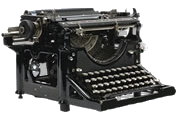The battle of Cantigny (May 28 – 31, 1918) was America’s first division sized engagement during the First World War; George Marshall would later opine that the objective was of no strategic importance and of small tactical value. General Pershing was hellbent on eradicating from the popular memory any mention of the A.E.F.’s poor performance at Seicheprey some weeks earlier, and Cantigny was as good a battleground in which to do it as any. Assessing the battle two weeks after the Armistice, Pershing’s yes men at the Stars & Stripes wrote:
But at Cantigny it had been taught to the world the significant lesson that the American soldier was fully equal to the soldier of any other nation on the field of battle.
Click here to read about the foreign-born soldiers who served in the American Army of the First World War.
Click here to read a STARS & STRIPES article about the sexually-transmitted diseases among the American Army of W.W. I…
